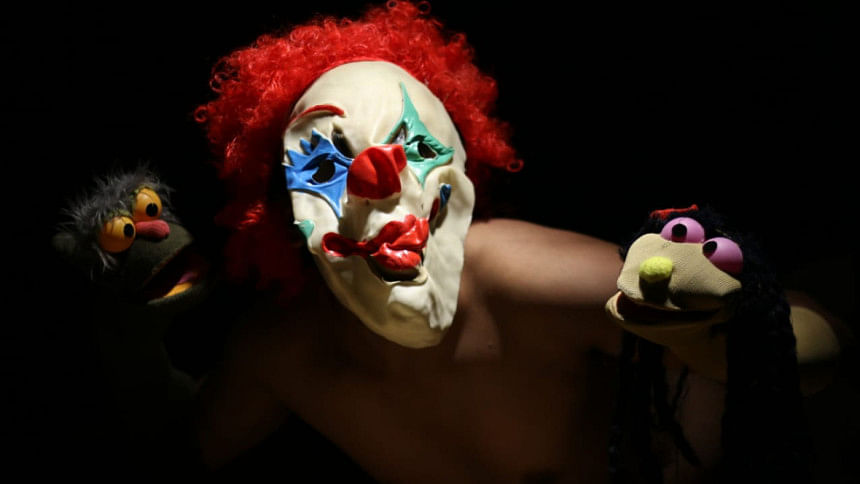Across the pages of ‘Himur Kolpito Diary’

What would you write in your final Facebook status if you knew you were going to die today?
I sat pondering who I would say my last goodbye to, a final expression of love, secrets that did not have to die with me when someone answered from the audience, "I want this land of ours to be filled with life." Somebody else said they would write "Life is beautiful".
Saddam Rahman—the performer of the one-man show—stood on top of a stool, with the noose around his neck. He followed up with another question, asking, "What if today, a frustrated artiste, in the course of performing, took his life on this stage in front of all of you?"

Suddenly, it made sense why this particular play did not allow minors and discouraged those with weak hearts from attending the show. Amidst the tension, hanging like an uncomfortable veil between the actor and the audience, Himu's diary flipped its pages to reveal different chapters of Nowshad Hasan Himu's mind.
Fondly known as Himaloy Himu by friends, you may imagine him as a barefooted man, dressed in a yellow Panjabi, wandering around the maze of his uncertainties. I know I was, yet, this Himu's story stands a tad different.
Himu, the real-life person that the play is based on, was an animal lover and one of the volunteers who rushed to scene of the Rana Plaza collapsed, back in April 24, 2013. Over the course of two weeks, Himu rescued countless people and helped extract their dead bodies from the ruins.

At times, he was forced to chop off their limbs and flesh to get them out. Himu spent days in the rubble of concrete, layered with decaying bodies. He would continue to help by treating and rehabilitating victims at the hospital for the next 17 days.
Unfortunately, his good deeds stayed with him in the form of the psychological trauma that evinced his daily life. Himu was not the only one haunted by the souls of the victims he failed to save. The audience sat enchanted, watching Himu begging those he could not save to stop coming back to him, all the while screaming for the luxury of sleeping without nightmares.
Troubled by the way the society around us operates, the incidence of crimes and wrongs are enough to send anyone spiraling, and Himu is no different. He spends his days detached from family and friends, planning to build an animal shelter where he'd stay with Julie—his faithful dog with whom he spent most of his days with.
Eventually, Himu was dirven to set himself on fire, on the sixth anniversary of the Rana Plaza tragedy. The words of his fictitious diary thought out loud, contemplating who Himu really was.
"I met Himu and his free thoughts first at the Gonojagoron Mancha. In some random conversations, I got a chance to look into the mind of a dreamer who had his way with words," said Sanjoy Sarker Muktonil, the writer and director of the play. "I don't know how well I was able to articulate his thoughts, but when Himu's mother came to watch the show and said she was finally able to see her son's thoughts, I felt at peace."
There is no happy ending to this play. Looking into the struggles of Himu to continue with life, is not a tribute to him either. This is but an attempt to understand what happened and fill the silence of what Himu thought and said. Baatighar Theatre's "Himur Kolpito Diary" was performed on Tuesday evening in the Studio Theatre Hall of Bangladesh Shilpakala Academy.

 For all latest news, follow The Daily Star's Google News channel.
For all latest news, follow The Daily Star's Google News channel. 




Comments